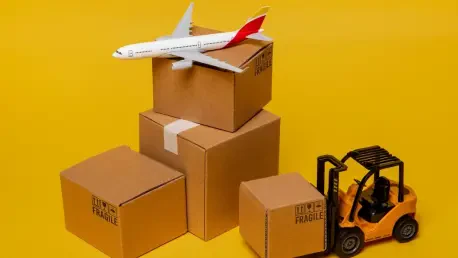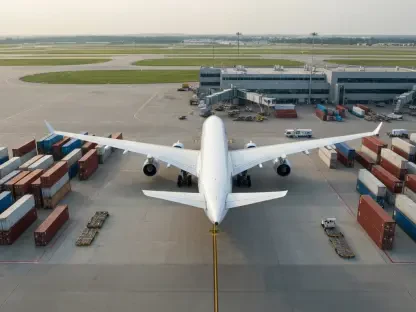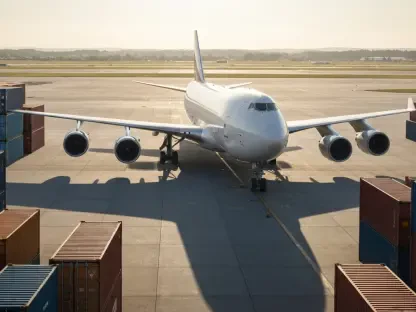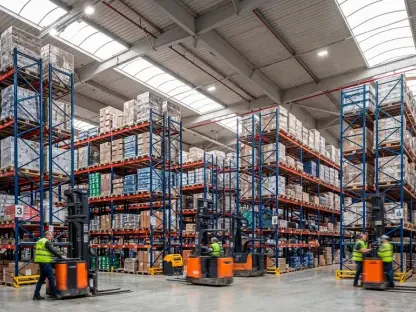Today, we’re thrilled to sit down with Rohit Laila, a veteran in the logistics industry with decades of experience in supply chain and delivery. Rohit’s deep expertise and passion for innovation in aviation logistics make him the perfect person to shed light on the latest developments in air cargo, particularly the exciting progress of the Airbus A350F freighter. In this conversation, we’ll explore the milestones achieved in the production of this cutting-edge cargo aircraft, the intricacies of assembling its components across multiple sites, the significance of key deliveries, and the challenges behind its delayed entry into service. Let’s dive into the world of air cargo innovation and discover what’s next for this game-changing freighter.
How would you describe the overall progress of the Airbus A350F production, and what stands out to you as the most significant achievements this year?
I’m really impressed with the strides made in the A350F production this year. Despite some setbacks, the team has hit several critical milestones, like completing the first set of wings, the horizontal stabilizer in Spain, and delivering key fuselage sections to the final assembly line in Toulouse. What stands out to me is the coordination across multiple sites to bring these massive components together. It’s a testament to precision engineering and logistics planning, especially in an industry where delays can easily snowball. The delivery of the complete fuselage recently is a huge step forward—it’s like seeing the skeleton of this beast come together, ready for the next phase.
Can you walk us through the process of delivering the fuselage to Toulouse and explain why this step is so pivotal for the project?
Absolutely. The fuselage delivery to Toulouse, the final assembly line for the A350F, involved bringing together the front, center, and rear sections from various Airbus sites in France and Germany. These pieces are massive, and moving them requires meticulous planning—think specialized transport equipment and routes to handle oversized cargo. The forward and center sections came from Montoir-de-Bretagne in France, while the rear section was shipped from Hamburg. This step is pivotal because it marks the point where the aircraft starts to take shape. Once these sections are in Toulouse, assembly can begin in earnest, setting the stage for integrating systems and other components like the wings.
The rear fuselage delivery from Hamburg was called an ‘incredible milestone.’ What makes this particular component and its delivery so noteworthy?
The rear fuselage, or aft section, is a critical piece of the puzzle. It’s not just about its size or complexity, though those are significant. This section interfaces with the tail of the aircraft, which is crucial for stability and control. Delivering it fully equipped from Hamburg to Toulouse shows that the upstream production processes are maturing. It’s a signal that the supply chain and manufacturing workflows are syncing up. Plus, emotionally for the teams, seeing this big piece arrive feels like a tangible win—it’s a morale booster and a reminder of how far the project has come.
How do the different Airbus sites in France and Germany collaborate to ensure all these components come together seamlessly?
Collaboration across Airbus sites is a masterclass in logistics. In France, the Montoir-de-Bretagne facility handles the assembly and equipping of the center and forward fuselage sections. Meanwhile, sites in Germany, like Hamburg, focus on key parts like the rear fuselage. The teams rely on tight communication, shared timelines, and digital tools to track progress and troubleshoot issues in real time. It’s not just about making the parts; it’s about ensuring they fit perfectly when they arrive in Toulouse. This level of coordination involves everything from synchronized production schedules to arranging specialized transport, which is no small feat when you’re dealing with components this large.
With the entry-into-service date for the A350F now set for the second half of 2027, can you share some insight into what might have caused this delay?
Delays in a project like the A350F aren’t uncommon, given the complexity of designing and building a freighter of this caliber. While I don’t have insider details, I can say that such delays often stem from a mix of design refinements, supply chain hiccups, or unforeseen production challenges. It could be anything from tweaking the aircraft to meet specific cargo operator needs to ensuring regulatory compliance. What matters is that Airbus is prioritizing getting it right over rushing it out. They’re likely using this extra time to refine processes, test components rigorously, and ensure the freighter meets the high standards expected in the cargo market.
Looking at some of the earlier achievements this year, can you tell us more about the significance of completing the first set of wings for the A350F?
The wings are the heart of any aircraft, and for a freighter like the A350F, they’re engineered to handle heavy loads over long distances. Completing the first set earlier this year was a major win because it’s one of the most technically demanding components to manufacture. It involves advanced materials, precise aerodynamics, and rigorous testing to ensure they can withstand the stresses of cargo operations. Getting this done early also means the team can focus on integration during assembly in Toulouse. It’s a foundational step that sets the tone for the aircraft’s performance and efficiency.
As the assembly process ramps up in Toulouse, what are the next big steps we should be watching for in the coming weeks?
In the coming weeks, I’d expect to see the focus shift to joining the fuselage sections and integrating major components like the wings and horizontal stabilizer. This is where the aircraft really starts to look like an airplane. We’ll likely see more parts arriving in Toulouse, including systems and interiors specific to the freighter variant. It’s also a critical time for testing initial assemblies to ensure everything aligns perfectly. Each step now builds momentum toward the first rollout, so it’s an exciting phase to watch as the A350F takes shape.
What is your forecast for the future of air cargo freighters like the A350F, especially in terms of their role in global logistics?
I’m incredibly optimistic about the future of freighters like the A350F. With e-commerce continuing to boom and global supply chains becoming more complex, the demand for efficient, high-capacity cargo aircraft is only going to grow. The A350F, with its advanced technology and fuel efficiency, is well-positioned to meet those needs. I foresee freighters playing a bigger role in just-in-time delivery and supporting industries like pharmaceuticals that require speed and reliability. The challenge will be balancing capacity with sustainability, but innovations like this aircraft are a step in the right direction. I think we’re on the cusp of a transformative era for air cargo logistics.









